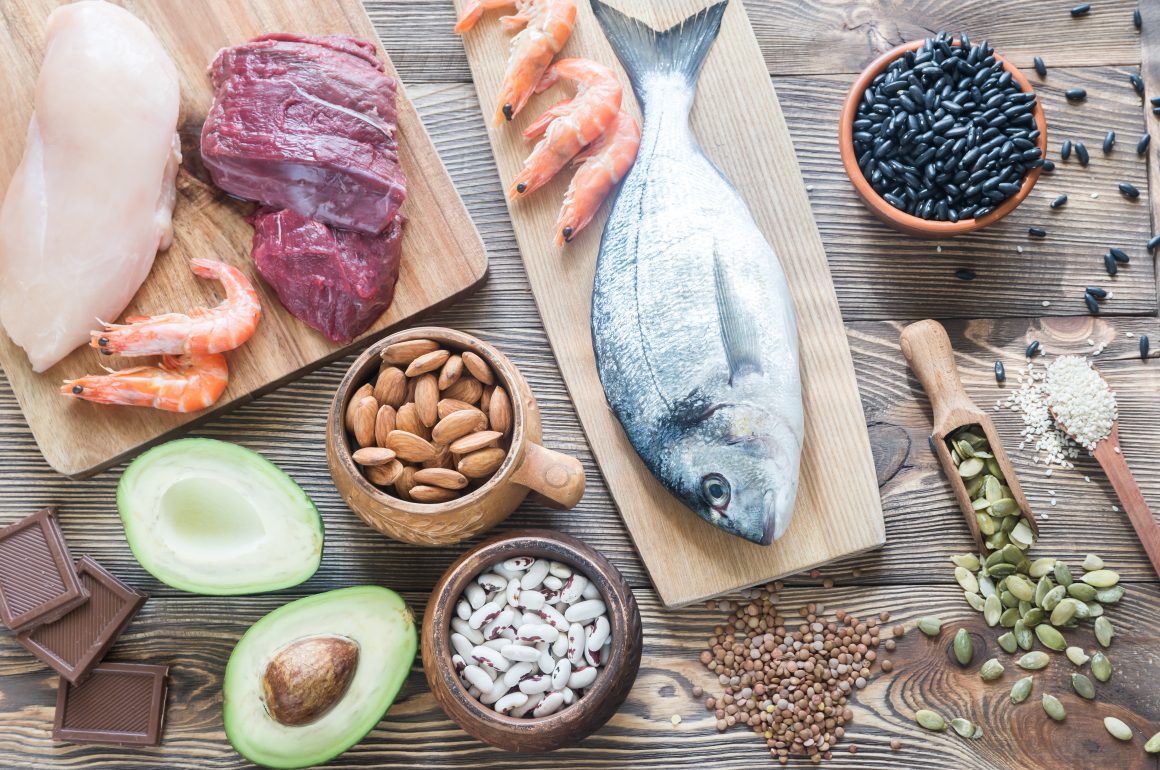
Carbohydrates, protein and fats are macronutrients. Which means our body needs all three macronutrients (if you are healthy and don’t have any special conditions for example celiac disease) every single day in a large quantity. Proteins are large, complex molecules that play many critical roles in the human body. They do most of the work in cells and are required for structure, function, and regulation of the body’s tissues and organs.
Functions of proteins. There are many different types of proteins, each with it’s particular role in the body
- Structural and Mechanical (e.g. collagen & keratin)
- Enzymes (Enzymes are proteins that catalyze chemical reactions without being destroyed in the process)
- Hormones (Insulin for example is a protein hormone that plays a key role in regulating the amount of glucose in the blood)
- Antibodies (Antibodies are blood proteins that attack and inactivate bacteria and viruses that cause infection)
- Fluid balance (Fluids in the body are found inside and outside of cells. Both levels must stay in balance for body processes to work properly)
- Acid-base balance (Protein helps maintain pH levels ((pH scale range from 0 to 14)) Protein act as buffers. When conditions are acidic, they pick up extra hydrogen ions. When conditions are alkaline, they donate hydrogen ions. The body works hard to keep the pH of blood near 7.4 or nearly natural)
- Channels and Pumps (Many substances pass into and out of cells via proteins that cross cell membranes)
- Transport (some proteins, lipoproteins for example, can be carried in the blood, other proteins carry fat-soluble vitamins such as vitamin A and certain other vitamins and minerals)
How do I recognize good protein sources?
Our body needs at least 20 amino acids – Amino acids are organic compounds that combine to form proteins. Amino acids function as the building blocks of proteins. – At least 20 amino acids are important in human nutrition; 9 of these amino acids are considered essential (must come from the diet), whereas the body can make the other 11 (nonessential) amino acid.
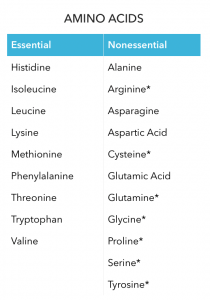
Essential (indispensable) amino acids are amino acids that the body cannot make at all or cannot make enough of to meet physiological needs. Essential amino acids must be supplied in the diet.
Nonessential (dispensable) amino acids are amino acids that the body can make if supplied with enough nitrogen. Nonessential amino acids do not need to be supplied in the diet.
*Conditionally essential amino acids are amino acids that are normally made in the body (nonessential) but become essential under certain circumstances, such as during critical illness.
Proteins in the Diet
Governments and health organizations have made recommendations about the amount per gram of every macro- and micronutrient which you should consume within a healthy diet. Meat, eggs, milk, legumes, grains and vegetables are all sources of protein. Fruits contain minimal amounts of proteins and are not considered a protein source.
Although both, animal and plant foods, do contain protein the quality in these foods differ. Complete, or high-quality proteins refer to foods which supply all of the essential amino acids in the amounts the body needs. Incomplete, or low-quality proteins are foods which lack adequate amounts of one or more essential amino acids. Animal foods generally provide complete protein. Most plant proteins are incomplete with one major exception: soybeans. Protein isolated from soybeans provide a complete protein equals to that of animal protein. Furthermore soybeans contain no cholesterol or saturated fat.
As mentioned above plant protein is usually incomplete and does not match the body’s amino acid needs as closely as animal foods does, but we do know now, that we can combine one plant food which might lack certain amino acids with another plant food to create a complementary protein source which completes the amino acid pattern. In general if you combine grains with legumes, or legumes with nuts or seeds, you will get a complete protein. For example, grain products such as pasta are low in the essential amino acid lysine but high in the essential amino acids methionine and cysteine. Legumes such as kidney beans are low in methionine and cysteine but high in lysine. In a dish combines these foods, pasta-kidney bean salad for example, the protein from the pasta complements the protein from kidney beans and together they provide a complete protein. This is an important factor for everyone who wants to reduce animal products or who follows a vegetarian or vegan lifestyle.
Examples of Complementary Food Combinations:
- Beans and rice
- beans and corn or wheat tortilla
- Rice and lentils
- Pasta with beans
Evaluating Protein Quality and Digestibility
There are three factors that specify if a protein is a (complete) high-quality protein or not. Factor number one: A complete protein provides all of the essential amino acids in the amount the body needs. Factor number two: The source has to provide enough other amino acids to serve as nitrogen source for synthesis of nonessential amino acids, and the last factor: A complete protein has to be easy to digest.
Here are the most common ways on how to measure the protein quality of a food:
- Chemical, or Amino Acid, Scoring
- Protein Efficency Ration (PER)
- Net Protein Utilization (NPU)
- Biological Value (BV)
- Protein Digestibility Corrected Amino Acid Score (PDCAAS)
Good & Natural Protein Resoruces
Complete Proteins:
- Meat
- Fish
- Dairy products (milk, yogurt, whey)
- Eggs
- Quinoa*
- Buckwheat*
- Hemp and chia seed*
- Spirulina*
*indicates plant-based
Incomplete Proteins:
- Nuts & seeds
- Legumes
- Grains
- Vegetables
These are just some examples of good protein sources and there are many more. If you are following a strict diet or have special medical needs please make sure you talk to your health care professional about nutrition and ask what works best for you. I would also recommend before taking any supplements make sure you talk to your doctor about it. If you don’t eat certain groups or if you are a vegetarian or vegan make sure to mix products together to create a “complete” protein. Stay healthy & fit.



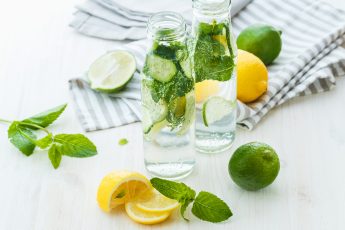
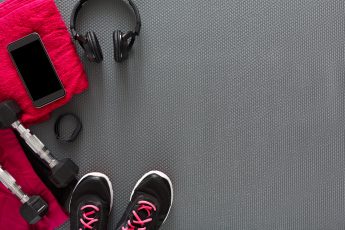

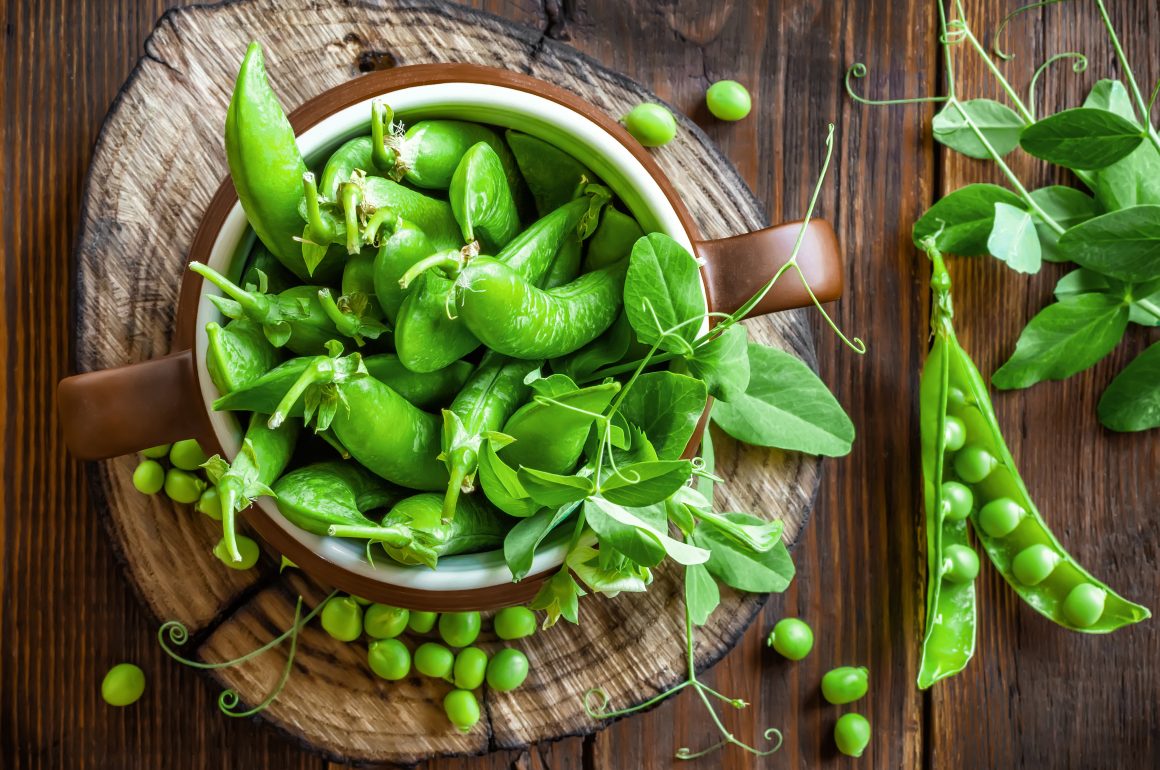
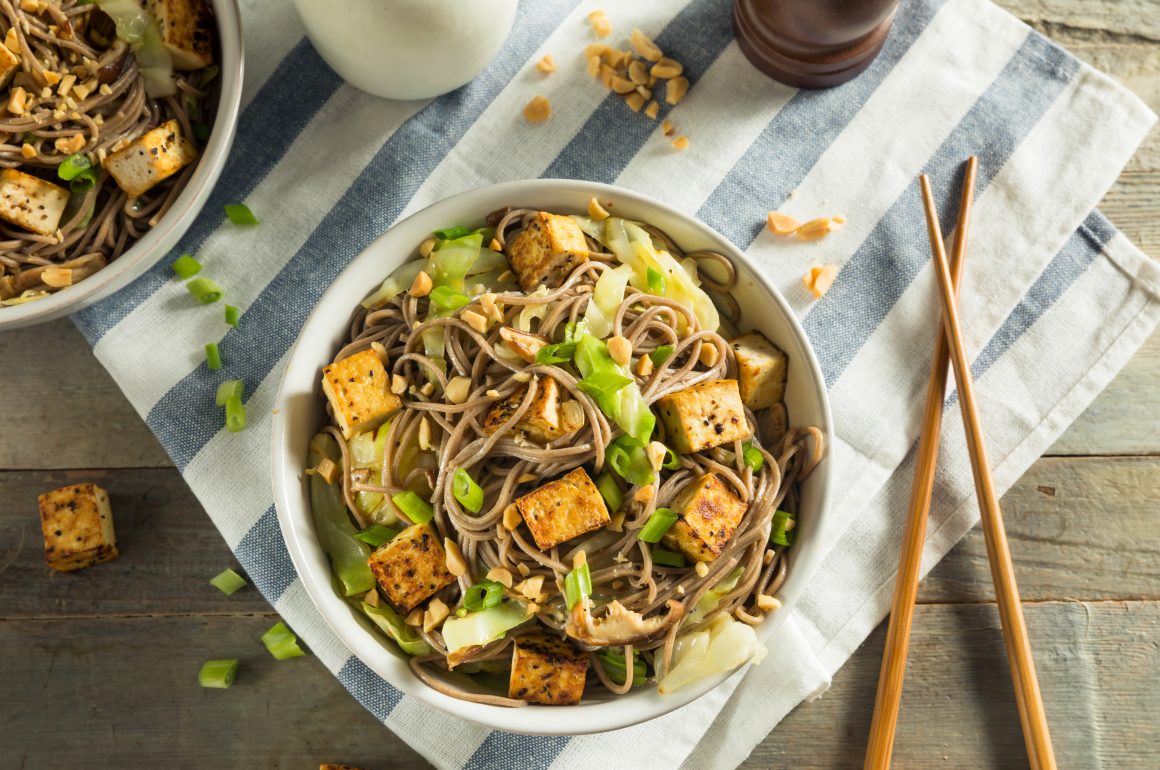
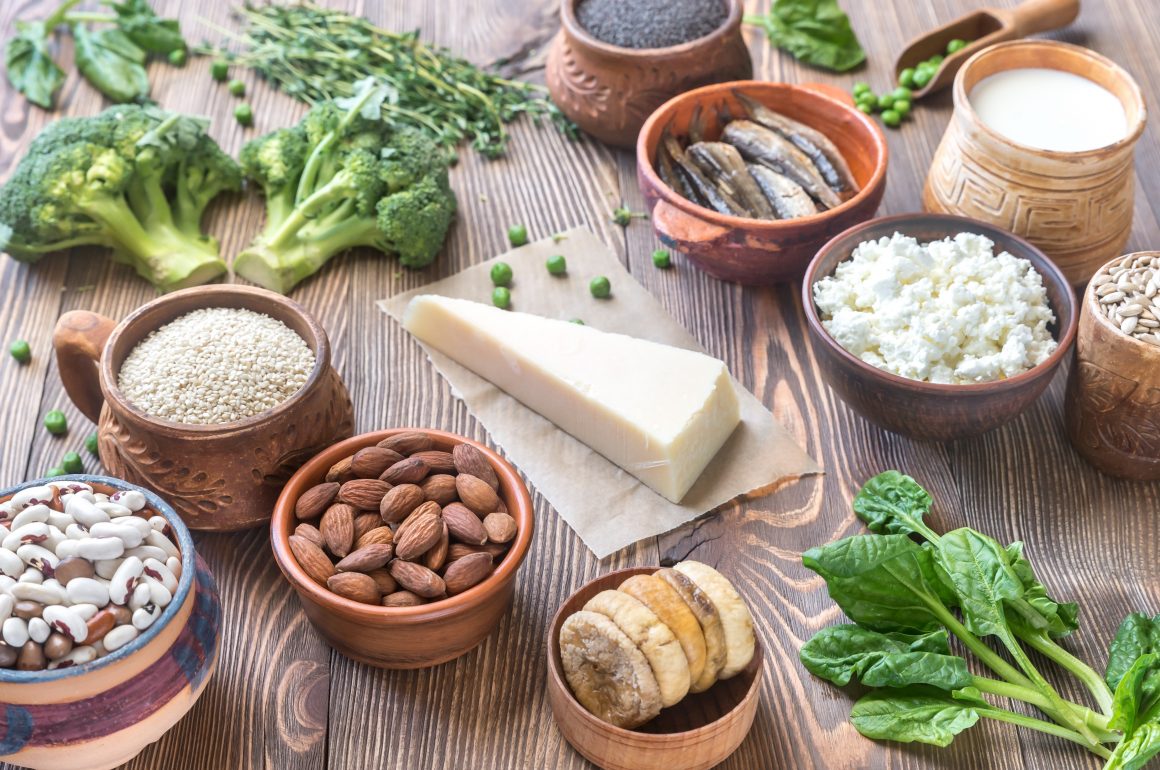
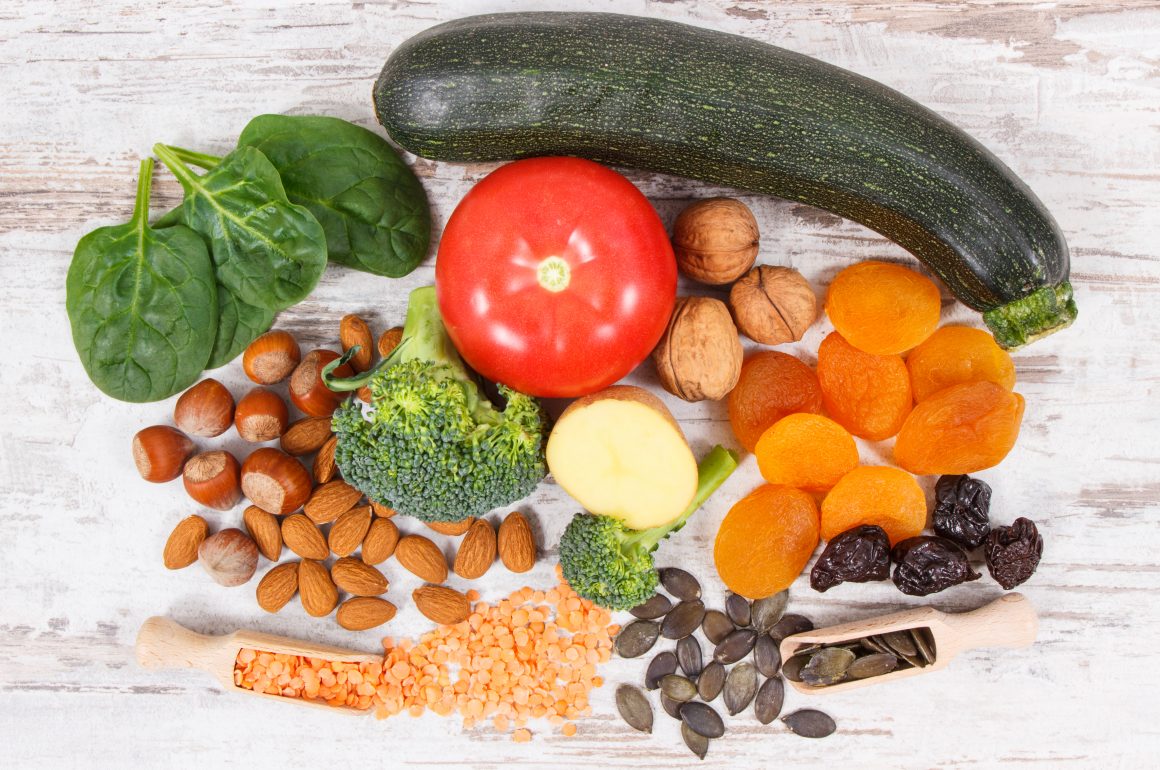
Bin gespannt auf deinen Beitrag zum Proteinpulver. Viele Grüße Jasmin